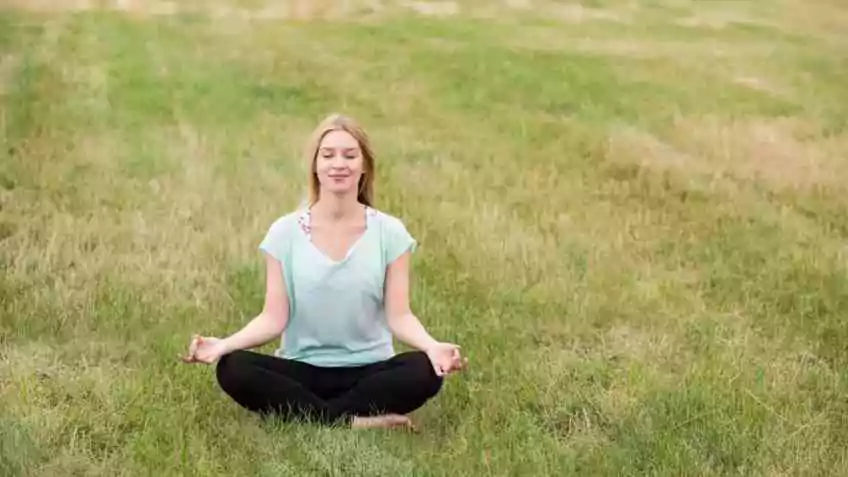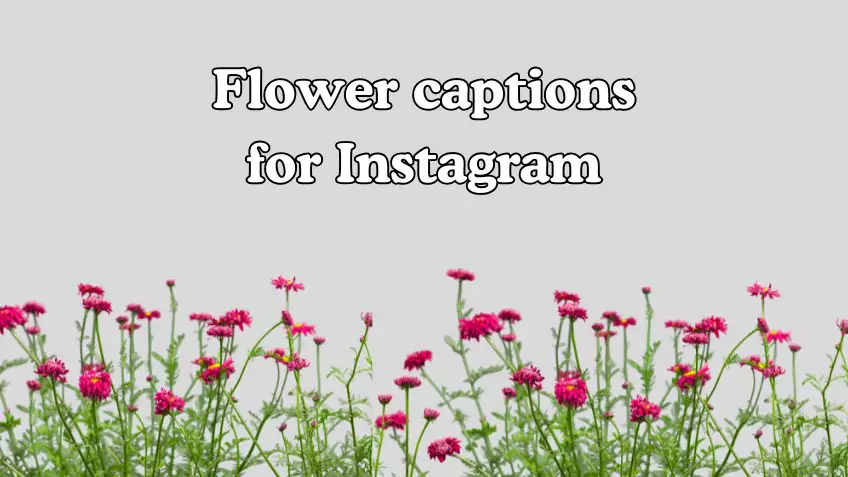Practicing Samadhi for Self-Realization
The Samadhi state is very important on the path of spiritual enlightenment and self-realization. A deep level of absorption known as samadhi is when a person surpasses their ego’s bounds and unites with all of consciousness. It is regarded as the zenith of meditation experiences and a doorway to discovering one’s actual self.
In this article, we will explore the practices and approaches that can help us cultivate Samadhi and experience profound transformation.
What is Samadhi?
In Samadhi, the mind becomes completely absorbed and focused, and there is a temporary suspension of the ego or personal identity. The boundaries between the subject and the object of meditation dissolve, creating a sense of unity and interconnectedness.
During Samadhi, the mind becomes calm, clear, and free from distractions. It is a state of heightened awareness and expanded consciousness. Time, space, and the usual fluctuations of thoughts and emotions are transcended, allowing for a direct experience of pure being and interconnectedness with the universal consciousness.
How many Stages of Samadhi ?
Depending on the particular meditation technique or spiritual tradition being practised, there can be differences in the phases of Samadhi. The development of Samadhi is, nevertheless, linked to a few recurring themes and descriptions. A synopsis and explanation of the phases are provided below:
1. Primary Focus: Initially, practitioners learn to maintain their attention on a selected meditation object, like their breath, a mantra, or a picture. Distractions lessen when the mind progressively feels more at ease.
2. Access attention: Practitioners move into an access-focused state as their attention becomes more profound. The mental state at this point is markedly more focused and stable. It becomes relatively effortless and uninterrupted to maintain attention on the selected object of meditation.
3. Absorption: Also known as deep meditative absorption, which is reached by the practitioner with prolonged practice. The real meaning of Samadhi begins to reveal itself here. Ordinary self-awareness is momentarily suspended as the mind is totally immersed in the meditation object. Intense focus, a blissful state, and a sensation of oneness with the meditation’s object are the characteristics of this experience.
4. Absorption That Is Deeper: As a practitioner advances, Samadhi absorption gets deeper and more intense. One experiences a deep sense of peace, clarity, and inner calm as the mind gets more and more polished and devoid of distractions.
5. Subtle Insights and Realizations: The deeper stages of Samadhi might bring about subtle insights and profound realizations about the nature of reality, the self, or the interconnection of all things or visions. Such realizations offer deep wisdom and comprehension and have the potential to be transforming.
6. Unity and Transcendence: The concept of dualism between the meditator and the object of meditation entirely vanishes at the highest phases of Samadhi, which are characterized by unity and transcendence. The divine or global mind is deeply felt to be one and interrelated. The ego’s boundaries and the conditioned mind’s constraints are transcended when the practitioner enters a transcendental state.

Dharana, or concentration meditation
Dharana, or concentration meditation, is a great way to develop attention and achieve a deep level of absorption. You pick a particular object of focus and give it your whole attention during this activity. This focus point could be anything that seems right for you, including your breath, a mantra, an image, or anything else.
Choose a comfortable, calm area where you won’t be easily distracted to start. Maintain an erect but flexible spine while sitting comfortably. To relax your body and mind, close your eyes and take several deep, soothing breaths.
Choose your focal object now. It could be the feeling of your breath coming in and going out of your nose, the mental recitation of a mantra, or even a clear, vivid picture in your mind.
Bring your focus to the selected object and anchor it there as you begin the practice. Take note of any lingering sounds, feelings, or visions that are connected to it. When your thoughts stray from the subject of focus—which they inevitably will—kindly and softly bring them back with no judgment or irritation.
You’ll see an improvement in your ability to focus with practice and time. Distractions lessen, and the mind gets steadier. You might feel peaceful, clear, and hyperaware as you sink into deeper stages of absorption.
Recall that the secret is to approach this exercise consistently and patiently. Begin with shorter sessions and progressively extend them to a length that suits you. It’s about gently teaching the mind to remain focused and in the moment, not about pushing yourself into a deep state of concentration.
In addition to being a practice in and of itself, Dharana is a step toward achieving samadhi, a condition in which one completely transcends the ego and merges with the object of meditation. On your journey towards self-realization, you will, therefore, progressively uncover the transformative power of Dharana if you continue to explore and develop your concentration practice.
Mindfulness Meditation (Vipassana)
Mindfulness meditation—also referred to as Vipassana—is a lovely technique that fosters a profound understanding of the nature of reality and present-moment awareness. The term vipassana, which means “clear seeing” or “insight,” refers to the practice of cultivating an accepting and nonjudgmental awareness of our thoughts, feelings, physical sensations, and the environment around us.

To get started, locate a peaceful, cosy area where you may sit and maintain an attentive but relaxed posture. Either close your eyes or maintain a gentle gaze in front of you. Breathe deeply a few times and give yourself permission to relax in the here and now.
Now, concentrate on your breathing. Every time you take a breath, pay attention to how it feels. You could notice your belly rising and falling or the sensation of air going through your nose. Let your breath serve as a stabilizing anchor to help you stay in the here and now.
Continue bringing your awareness to include any thoughts that come to mind, feelings you might be feeling, and bodily sensations. Just watch them with an attitude of curiosity and nonjudgment instead of getting sucked into them or attempting to change them. Consider them transitory occurrences, akin to clouds floating through the heavens.
Refocus your attention on your breath or any other chosen anchor if you catch yourself seeing your mind straying. Do this softly and without passing judgment. This is a normal aspect of the practice, so be kind to yourself.
You’ll start to gain more clarity and understanding of how your mind functions as your mindfulness practice grows. You’ll see tendencies, habits, and patterns without becoming sucked into them. You may handle life’s obstacles with greater knowledge and compassion thanks to this increased awareness.
What is Kundalini Yoga ?
A powerful and age-old practice, Kundalini Yoga seeks to awaken and channel the spiritual energy known as Kundalini, which lies latent inside each of us. Pranayama, mantra chanting, physical postures, meditation, and occasionally hand motions and body locks (bandhas) are all combined in a beautiful way.

At the base of each spine lies a coiled energy that is typically pictured as a serpent. This is the basis for the practice of Kundalini Yoga. The primary energy centres in the body, referred to as chakras, can be activated and harmonized with consistent practice by directing this energy upward through the Sushumna, the central energy channel.
Kundalini Yoga programs are frequently energetic and energizing to awaken your body, mind, and soul. They often consist of a set of postures called kriyas, which are precise movement and breathing patterns that focus on various facets of your being.
During Kundalini Yoga, the use of breathwork and targeted mantra chanting aids in the flow of energy and deeper practice. A higher level of awareness can be reached and altered through the vibratory quality of mantras.
Emphasizing the feeling and expression of emotions is one distinctive feature of Kundalini Yoga. Acknowledging the inherent nature of emotions in the human experience, the discipline offers methods for managing and directing them in a constructive manner.
Many benefits, such as heightened energy, heightened consciousness, emotional equilibrium, and a stronger bond with your true self, can arise from Kundalini Yoga practice. By exploring your inner strength and potential, it can be a life-changing experience.
It is advised that you locate a certified and experienced instructor or enrol in a Kundalini Yoga class or workshop if you are interested in learning more about Kundalini Yoga. In addition to offering you practice-friendly surroundings, they may instruct you in the appropriate methods.
Devotional Practices (Bhakti Yoga)
Building a relationship with the divine from the heart is the main goal of Bhakti Yoga. Many devotional techniques, including prayer, chanting, singing hymns or mantras, taking part in religious ceremonies, and expressing appreciation, can help achieve this.
Ishta Devata, or a personal god or form of the divine that strongly resonates with you, is one of the basic ideas of Bhakti Yoga. It could be an abstract idea like love or compassion, or it could be a particular deity from a certain religion. In order to pour your love and devotion towards an Ishta Devata, it is important to build a close and personal connection.
In order to connect with the divine, convey your desires, ask for guidance, and show thanks, prayer is an essential component of Bhakti Yoga. Your soul and the spiritual being you believe in are having an intimate communication. You can become closer, receive comfort, and feel more at peace with God via prayer.
Another potent technique in Bhakti Yoga is chanting and singing devotional songs or mantras. Reciting heavenly names or sacred sounds causes a resonance in vibration that opens the heart, soothes the mind, and uplifts the spirit. Deep connection and unification with the divine can be felt when you lose yourself in the devotional tunes.
Enhancing your loyalty and bond comes from taking part in religious rites and rituals that are unique to your tradition. You may show your love and submit to the divine in a concrete and holy way by participating in these rituals, which are symbolic acts of worship and devotion.
Inquiry and Self-Reflection (Self-Inquiry)
Inquiry and self-reflection, also known as self-inquiry, are powerful practices for exploring the nature of the self, gaining insight into our thoughts, emotions, and beliefs, and ultimately realizing our true nature. It is a process of investigating the fundamental question, “Who am I?” or “What is the nature of my true essence?”
Self-inquiry often involves turning our attention inward and examining our thoughts, emotions, and experiences with a sense of curiosity and openness. It is about questioning the assumptions, beliefs, and identifications that shape our sense of self and exploring the nature of our existence beyond the conditioned mind.
To begin self-inquiry, find a quiet and contemplative space where you can be alone with your thoughts. Sit comfortably, close your eyes, and bring your attention to the present moment.
Start by simply observing the thoughts that arise in your mind. Notice the patterns, the narratives, and the stories that you tell yourself. As you observe these thoughts, ask yourself, “Who is thinking these thoughts? Who is the ‘I’ that identifies with them?”
Allow yourself to explore these questions without seeking intellectual answers. Instead, remain open to the possibility of direct experiential insight. Observe any sensations, emotions, or beliefs that arise as you delve deeper into the inquiry.
You can also bring attention to the bodily sensations and emotions associated with different experiences. Notice how they come and go, how they change, and ask yourself, “Who is experiencing these sensations? Who is aware of these emotions?”
As you continue the practice of self-inquiry, you may begin to recognize that the sense of self is not fixed or solid but rather a collection of thoughts, emotions, and experiences that arise and pass away. You may start to glimpse a deeper awareness, a presence that is not limited to any particular identification or concept.
In conclusion,
Samadhi practices offer a potent way to achieve spiritual enlightenment and self-realization. A profound oneness with universal awareness can be experienced by going into deep states of absorption and overcoming the constraints of the ego. We can develop Samadhi and awaken to our innate divinity by practising breath awareness, awareness of our surroundings, mantra repetition, and open-minded meditation.
Also read:






